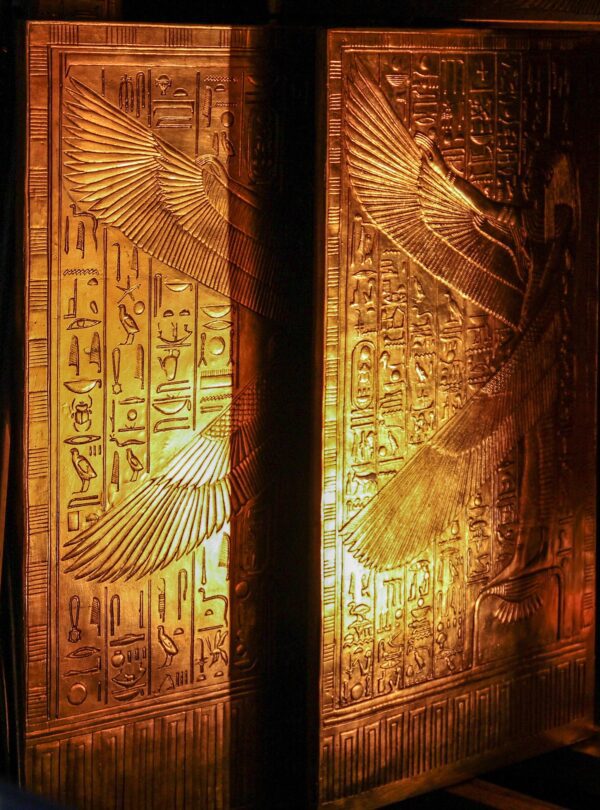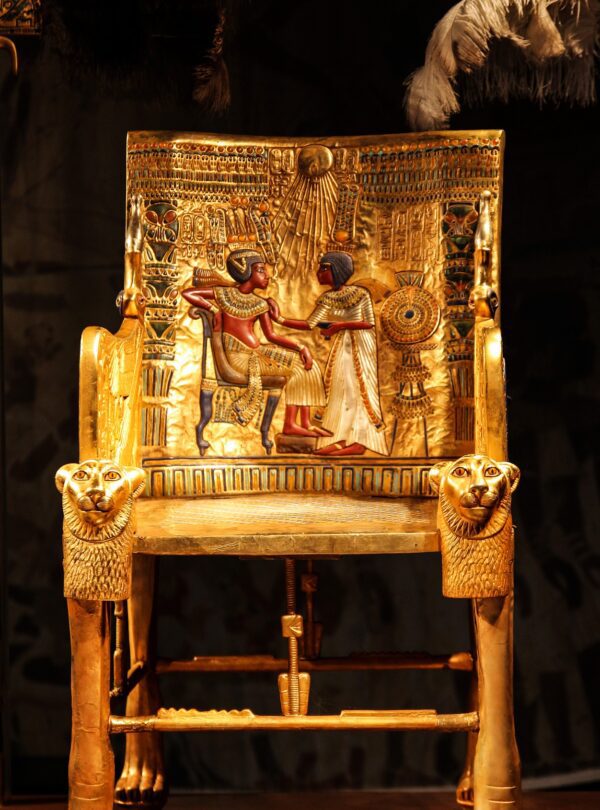The hidden history of the Tomb of Tutankhamun

Information on the Life and Death of Tutankhamun
The 1922 discovery of King Tutankhamun tomb in Egypt’s Valley of the Kings made him one of history’s most well-known kings. The golden-masked mummy of the child king captured the attention of millions of people who were captivated by the discovery. Between approximately 1334 and 1325 BC, during the end of the Eighteenth Dynasty of the New Kingdom, Tutankhamun ruled as pharaoh. After the passing of Akhenaten, who was probably his father, and the ensuing short reigns of Neferneferuaten and Smenkhkare, Tutankhamun assumed the throne under the unheard-of viziership of his eventual successor, Ay at the age of eight or nine. The Amarna Period was ushered in by Akhenaten’s drastic transformation of ancient Egyptian religion, which saw the worship of Aten as the sole god and the rejection of all other gods. The revival of traditional religious practises was one of Tutankhamun’s most significant achievements. His name was changed from Tutankhaten, which referred to the god of Akhenaten, to Tutankhamun, which paid homage to Amun, one of the most important gods in the ancient pantheon. The name of his queen was also changed, going from Ankhesenpaaten to Ankhesenamun.
The remainder of Tut’s brief reign was fairly unremarkable. Tutankhamun was one of the less well-known pharaohs of his time and ruled for only around nine years. Some scholars theorize that royal advisers and priests may have even used the boy king as a puppet to reclaim power for themselves. Others contend that Tut’s successors had his name erased from archives and monuments because of his connection to the despised Akhenaten. When King Tut assumed the throne at the age of nine, one of the first things he did was to reinstate the numerous gods that had been worshipped before King Akhenaten barred all but Aten. He effectively put an end to the deity Aten’s dominion. He decided to strengthen Amun’s rule instead. The priesthood was once again granted the old rights after the ban on Amun cult worship was lifted.
How Tut died is one of the mysteries that has baffled historians and scientists alike. Since the British archaeologist Howard Carter found Tut’s tomb in 1922, theories have proliferated. Some believe he was murdered, or that he suffered from malaria or another fatal illness. Others have proposed that Tut’s missing sternum and ribs may have fallen off his chariot or been crushed in an accident. Others claim that he most certainly passed away as an invalid, citing indications of clubfoot and possible cane use.
Discovery of Tutankhamun tomb
The only royal tomb from the Valley of the Kings that was discovered relatively undamaged is the tomb of the Eighteenth Dynasty king Tutankhamun (about 1336–1327 BC). The tomb was first discovered by Howard Carter in 1922, and when the golden artifacts and other valuable items were being hauled out, it continued to make headlines across the world. The discovery of the tomb is still regarded as one of the most significant archaeological discoveries to date. The tomb and its treasures are symbols of Egypt. The Tutankhamun tomb is located at number 62 in the Valley of the Kings. This is located across from what is now known as Luxor on the west bank of the Nile. It is actually relatively modest in comparison to the other tombs on this site, both in terms of size and design, despite the wealth it housed. This is probably because Tutankhamun ascended the throne at a young age and ruled for only nine years in total.
One could wonder about the wealth that formerly lay within the much larger tombs of the most ruthless kings of the New Kingdom, like Hatshepsut, Thutmose III, Amenhotep III, and Ramesses II. Amazingly, Howard Carter needed more than seven years to thoroughly empty the tomb. Naturally, this was due to the fact that he was cataloging and photographing everything found. With the exception of the pharaoh’s mummy, which is preserved in its original sarcophagus, the tomb is now completely empty, yet there is still plenty to see. The original murals and paintings still adorn the four rooms carved out of the local bedrock, and the stone steps that Carter descended to access the tomb are still in use. The world’s most well-known royal mummy is still housed in the burial chamber, as was previously mentioned.
Only the burial chamber’s walls have any decoration. In contrast to most earlier and later royal tombs, which are richly decorated with funeral literature like the Amduat or Book of Gates, which helped the deceased king reach the afterlife, only one scene from the Amduat is represented in the tomb of Tutankhamun. The rest of the tomb’s decorations either show Tutankhamun’s funeral or show him with different gods


There have been several theories as a result of the Tutankhamun tomb’s (KV62) small stature. When his successor, the high official Ay, passed away, he was buried in a tomb (KV23) that may have been created with Tutankhamun in mind at first but was not quite finished when the young king passed away. The tomb of Horemheb, Ay’s successor, has also been the subject of the same defense (KV57). If so, it is unknown for whom the ultimate Tutankhamun tomb, KV62, was carved; nonetheless, it has been asserted that it previously existed, maybe as a private burial or as a storage space that was later expanded to accommodate the king. Whatever the reason, the limited space of the tomb caused the 5000 or so artifacts that were found inside to be packed very closely together. These depict the way of life in the royal palace and contained things that Tutankhamun would have used daily, such as clothing, jewelry, cosmetics, incense, furniture, chairs, toys, vessels made of various materials, chariots, and weaponry.

Without a doubt, the answer to this question is yes.
